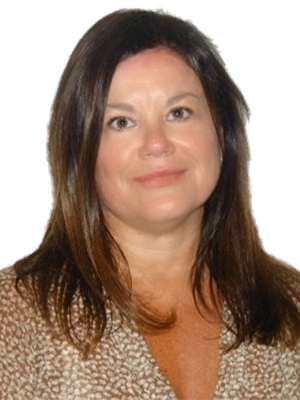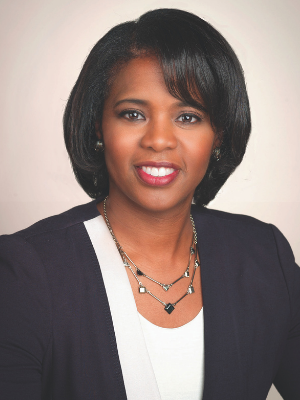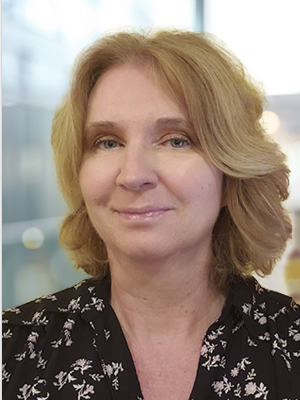 “Curiosity is a hallmark of who I am and has been a huge enabler to my success. I am trying to grow all the time,” says Aine Leddy. “One thing I found when I first came to the U.S. decades ago was that many people were specialized, deep and narrow. I always aspired to know a little bit about everything.”
“Curiosity is a hallmark of who I am and has been a huge enabler to my success. I am trying to grow all the time,” says Aine Leddy. “One thing I found when I first came to the U.S. decades ago was that many people were specialized, deep and narrow. I always aspired to know a little bit about everything.”
Leddy speaks to elevating to the C-Suite, cultivating intellectual curiosity and being proactive in expanding your ability to lead.
Stepping up to the C-Suite
Irish by birth, Leddy emigrated to the U.S. in the late 80’s while training to be an oil trader. Finding that her personality was not suited to the aggressive trading environment, she moved into financial services at Morgan Stanley, where she received an analyst training that she likens to an in-house Executive MBA.
After holding a variety of financial roles across 22 years at the firm, she reached an inflection point while working as the finance partner to the Chief Information Officer (CIO) of the investment management division, Marianne Bachynski, AIG Investments+ Chief Information Officer, at the time. Technology was developing to become its own branch of the business, and Leddy was given the opportunity to step into a Chief Operating Officer (COO) role with overview of the IT business.
“I’m a big picture kind of person. I find closeness to decision-making and strategy very compelling. I love to ideate and be in a position where you can see ideas taking shape and then ultimately come to fruition,” says Leddy. “I enjoy the increased personal responsibility to make things happen as well.”
After a few transitions, Leddy began working at AIG in September 2020, motivated by the opportunity to learn about the insurance industry at a highly reputable firm, expand her skillset and reunite with Bachynski. While she has yet to be in the room with her team due to the need to work virtually, she’s been highly impressed by the collaboration, communication, cutting-edge performance, and progress on the big, gnarly technological issues like cloud migration.
Being Curious with Breadth
“I personally like to know enough about everything ‘to be dangerous’ and went out of my way to equip myself with that knowledge,” she says. “That curiosity has served me, particularly with my entreé into the tech COO world. I could show up at the table and enter right into a discussion about the business strategy and where technology fits in, and that was apparent to the people who have given me the opportunities.”
As a teacher’s daughter, Leddy prides herself on being super-prepared and putting the “sweat equity” into knowing her stuff, and it’s a hot-button for her to watch someone trying to wing it when they clearly haven’t done the same preparation. Despite this, she has learned to take in stride the out of left field questions as she is also prone to be the one to ask the question.
Being curious as a principle means the willingness to reveal what you don’t know: “I think a lot of women think it’s better not to ask because maybe you should already know. So, I might soften that by prepping my question with, ‘I probably should know this, but would you mind explaining it anyway.’”
Nine out of ten times, the person next to her will thank her for asking because they were wondering the same thing.
Taking Action in Empowering Yourself
Leddy emphasizes it’s critical to be solution-focused: “I do like to ideate and strategize, but I’m also an action-oriented person. You can sit around and admire the problem for a long time, but ultimately, you have to get the stuff done.”
She feels that taking personal initiative in growing yourself is foundational, as she, too, often hears people defer the responsibility of their learning limitations to their organization, when she argues you can be proactive yourself.
“Training is out there. It won’t always be the customized training that you do as part of the code of conduct or something like that,” advises Leddy. “But you can go and talk to someone with a different skillset than yours. There’s tons of information out there for you to train yourself, and there’s so much you can do for yourself in terms of expanding your horizons.”
When Leddy glances around her senior circle of peers at AIG Investments, and at some of her previous employers, she’s invigorated by the presence of women leaders. She has found herself fortunate to be in environments that reward intellectual curiosity, foremost, and where she felt she could be herself.
“Some women feel they need to be more aggressive to be successful. I never felt I had to be anybody other than who I am,” says Leddy. “When you bring your authentic self to the table in any situation, you’re going to be more successful.”
Being Willing to Move, But Also Move On
“You don’t realize how immersed you are in a culture until you have to get to know another one. I think switching companies taught me to be more open and not to bring my bias from another culture,” says Leddy. “That includes listening upfront and taking in how people work, work together and what’s important to leaders in one company versus another.”
Earlier in her career, while putting three children through college and being motivated by a compensation-focused opportunity, Leddy learned that you don’t always know whether something is going to be a good fit until you’re inside of it.
“I tell those I mentor that you cannot know all of the elements of anything ahead of time, you just can’t. So, if you want to switch departments or companies or even careers, you think you are going in with ‘eyes wide open’ but you may not be,” she says. “The lesson I learned is that if it’s making you miserable, change your situation as quickly as you can, learn from what you don’t want and then move on. Don’t stay where you’re unhappy.”
Staying True to What You Want
While Leddy feels she was most often mentored on business skills, her mentorship has always begun with listening into: what do they really want?
She’s found that it tends to be guidance on the softer side of matters, such as how she managed to get promoted while her kids were little and still feel present in the home. Leddy is known by her peers for being grounded and ‘unflappable’, and she carries that grounding to her mentees.
One thing she imparts onwards is never be afraid to ask for a raise or promotion but be solid in arguing your case for why you’ve earned it. She also advises to not get caught in emotional defeat when you don’t receive what you want, but be resilient, prepare to go back in and to argue your case again.
“I think women do ourselves a disservice, because we take things personally and get annoyed with our manager if we don’t get the raise or promotion,” she observes. “Whereas men seem to think, ‘If it doesn’t happen, I’ll get back in the ring and I’ll fight the good fight again next year.’ Ultimately, promotion is a numbers game. It can’t happen for everybody all of the time, so rather than take it so personally, elevate your case and prepare to ask again.”
Leddy has been married for almost 33 years and her three grown children are now in their mid-late twenties. She loves her Peloton bike and taking in the sun in her garden. She is a huge reader, a passionate etymologist and prides herself on living holistically to enjoy all aspects of her life.
By Aimee Hansen





